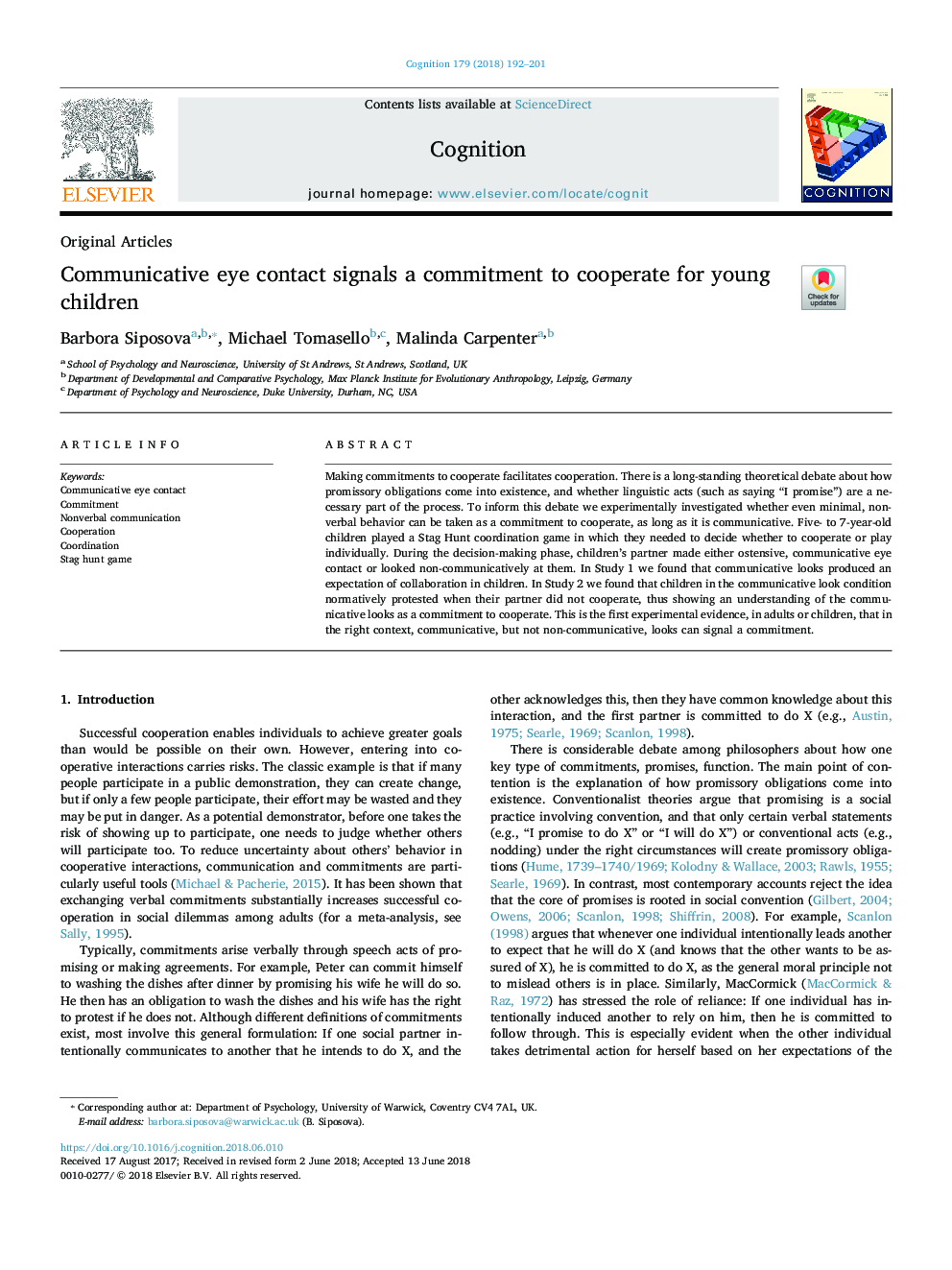| Article ID | Journal | Published Year | Pages | File Type |
|---|---|---|---|---|
| 7285181 | Cognition | 2018 | 10 Pages |
Abstract
Making commitments to cooperate facilitates cooperation. There is a long-standing theoretical debate about how promissory obligations come into existence, and whether linguistic acts (such as saying “I promise”) are a necessary part of the process. To inform this debate we experimentally investigated whether even minimal, nonverbal behavior can be taken as a commitment to cooperate, as long as it is communicative. Five- to 7-year-old children played a Stag Hunt coordination game in which they needed to decide whether to cooperate or play individually. During the decision-making phase, children's partner made either ostensive, communicative eye contact or looked non-communicatively at them. In Study 1 we found that communicative looks produced an expectation of collaboration in children. In Study 2 we found that children in the communicative look condition normatively protested when their partner did not cooperate, thus showing an understanding of the communicative looks as a commitment to cooperate. This is the first experimental evidence, in adults or children, that in the right context, communicative, but not non-communicative, looks can signal a commitment.
Related Topics
Life Sciences
Neuroscience
Cognitive Neuroscience
Authors
Barbora Siposova, Michael Tomasello, Malinda Carpenter,
